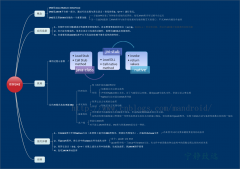本文實(shí)例講述了java使用preparedstatement接口及resultset結(jié)果集的方法。分享給大家供大家參考,具體如下:
說明:
1.preparedstatement接口繼承statement,它的實(shí)例包含已編譯的sql語句,執(zhí)行速度要快于statement。
2.preparedstatement繼承了statement的所有功能,三種方法executeupdate、executequery、execute不再需要參數(shù)。
3.在jdbc應(yīng)用中,一般都用preparedstatement,而不是statement。
便于操作,先做一些封裝:
對(duì)連接數(shù)據(jù)庫,關(guān)閉連接封裝,在之前博客中已經(jīng)提到dbutil.java;
對(duì)數(shù)據(jù)庫表進(jìn)行封裝,這里是對(duì)我的數(shù)據(jù)庫中comp表進(jìn)行操作,因此封裝如下:
|
1
2
3
4
5
6
7
8
9
10
11
12
13
14
15
16
17
18
19
20
21
22
23
24
25
26
27
28
29
30
31
32
33
34
35
36
37
38
39
40
41
42
43
44
45
46
47
48
49
50
51
52
53
54
55
56
57
58
59
60
61
62
63
64
65
66
67
|
package com.mysqltest.jdbc.modelcomp;public class compmember { private int id; private string name; private int age; private double salary; /** * 構(gòu)造函數(shù)1 * @param name * @param age * @param salary */ public compmember(string name, int age, double salary) { super(); this.name = name; this.age = age; this.salary = salary; } /** * 重載構(gòu)造函數(shù) * @param id * @param name * @param age * @param salary */ public compmember(int id, string name, int age, double salary) { super(); this.id = id; this.name = name; this.age = age; this.salary = salary; } /** * get,set方法 */ public int getid() { return id; } public void setid(int id) { this.id = id; } public string getname() { return name; } public void setname(string name) { this.name = name; } public int getage() { return age; } public void setage(int age) { this.age = age; } public double getsalary() { return salary; } public void setsalary(double salary) { this.salary = salary; } @override /** * 改寫tostring,使得顯示更好 */ public string tostring() { return "["+this.id+"]"+this.name+","+this.age+","+this.salary; }} |
然后利用preparedstatement接口實(shí)現(xiàn)增的操作:
|
1
2
3
4
5
6
7
8
9
10
11
12
13
14
15
16
17
18
19
20
21
22
23
24
25
26
27
28
29
30
31
32
33
34
|
package com.mysqltest.jdbc.xiao1;import java.sql.connection;import java.sql.preparedstatement;import com.mysqltest.jdbc.modelcomp.compmember;import com.mysqltest.jdbc.util.dbutil;public class pstatementtest { private static dbutil dbutil = new dbutil(); /** * 用preparedstatement添加成員 * @param mem * @return * @throws exception */ private static int addmember(compmember mem) throws exception{ connection con = dbutil.getcon(); string sql = "insert into comp values(null,?,?,?)"; preparedstatement pstmt = con.preparestatement(sql); pstmt.setstring(1, mem.getname()); pstmt.setint(2, mem.getage()); pstmt.setdouble(3, mem.getsalary()); int result = pstmt.executeupdate();//中間不用傳入sql dbutil.close(pstmt, con); //preparedstatement是子類,用父類關(guān)閉也行 return result; } public static void main(string[] args) throws exception { compmember mem = new compmember("劉翔", 24, 8000.00); int result = addmember(mem); if (result==1) { system.out.println("添加成功"); } else { system.out.println("添加失敗"); } }} |
再利用preparedstatement接口實(shí)現(xiàn)查詢,并運(yùn)用resultset結(jié)果集:
|
1
2
3
4
5
6
7
8
9
10
11
12
13
14
15
16
17
18
19
20
21
22
23
24
25
26
27
28
29
30
31
32
33
34
35
36
37
38
39
40
41
42
43
44
45
46
47
48
49
50
51
52
53
54
55
56
57
58
59
60
61
62
63
64
65
66
67
68
69
70
71
72
73
74
75
76
|
package com.mysqltest.jdbc.xiao2;import java.sql.connection;import java.sql.preparedstatement;import java.sql.resultset;import java.util.arraylist;import java.util.list;import com.mysqltest.jdbc.modelcomp.compmember;import com.mysqltest.jdbc.util.dbutil;public class resultsettest { private static dbutil dbutil = new dbutil(); /** * 遍歷查詢結(jié)果 * @throws exception */ @suppresswarnings("unused") private static void listmem1() throws exception { connection con = dbutil.getcon();// 獲取連接 string sql = "select * from comp"; preparedstatement pstmt = con.preparestatement(sql); resultset rs = pstmt.executequery();// 返回結(jié)果集 // next()將光標(biāo)向后一行 while (rs.next()) { int id = rs.getint(1);// 獲取第一列的值id string name = rs.getstring(2);// int age = rs.getint(3); double salary = rs.getdouble(4); system.out.println("編號(hào):" + id + "姓名:" + name + "年齡:" + age + "工資:" + salary); system.out.println("+====================================+"); } } /** * 遍歷查詢結(jié)果方法2 * @throws exception */ @suppresswarnings("unused") private static void listmem2() throws exception { connection con = dbutil.getcon();// 獲取連接 string sql = "select * from comp"; preparedstatement pstmt = con.preparestatement(sql); resultset rs = pstmt.executequery();// 返回結(jié)果集 // next()將光標(biāo)向后一行 while (rs.next()) { int id = rs.getint("id");// 獲取第一列的值id string name = rs.getstring("name");// int age = rs.getint("age"); double salary = rs.getdouble("salary"); system.out.println("編號(hào):" + id + "姓名:" + name + "年齡:" + age + "工資:" + salary); system.out.println("+====================================+"); } } private static list<compmember> listmem3() throws exception{ list<compmember> memlist = new arraylist<compmember>(); connection con = dbutil.getcon();// 獲取連接 string sql = "select * from comp"; preparedstatement pstmt = con.preparestatement(sql); resultset rs = pstmt.executequery();// 返回結(jié)果集 // next()將光標(biāo)向后一行 while (rs.next()) { int id = rs.getint("id");// 獲取第一列的值id string name = rs.getstring("name");// int age = rs.getint("age"); double salary = rs.getdouble("salary"); compmember mem = new compmember(id, name, age, salary); memlist.add(mem);//添加到list中 } return memlist; } public static void main(string[] args) throws exception {// listmem1();// listmem2(); list<compmember> memlist = listmem3(); for (compmember mem : memlist) { //遍歷集合的每個(gè)元素 system.out.println(mem); } }} |
希望本文所述對(duì)大家java程序設(shè)計(jì)有所幫助。
原文鏈接:https://blog.csdn.net/u010986080/article/details/51813056















